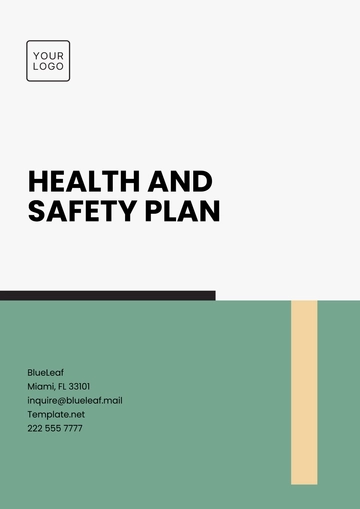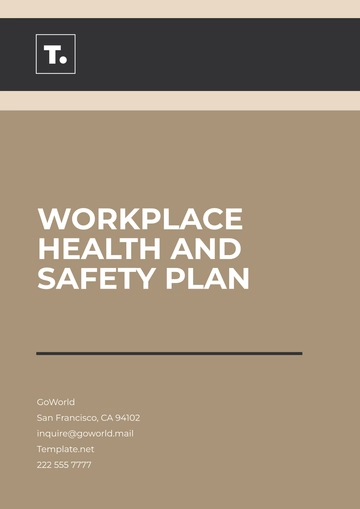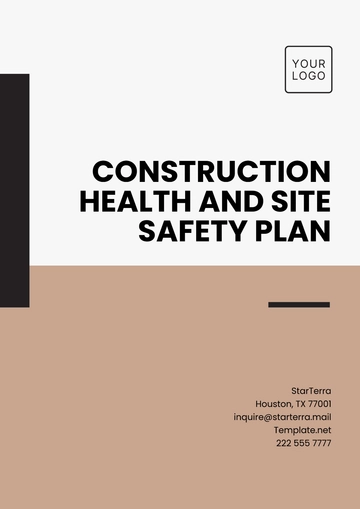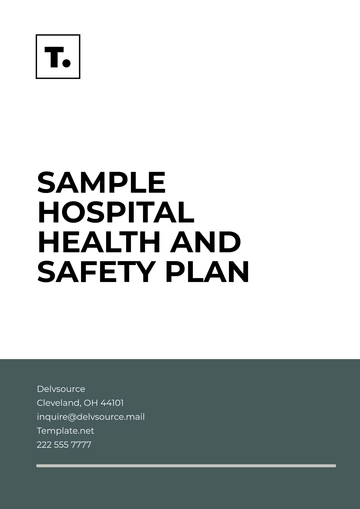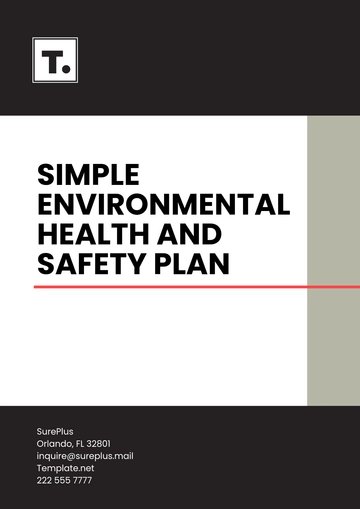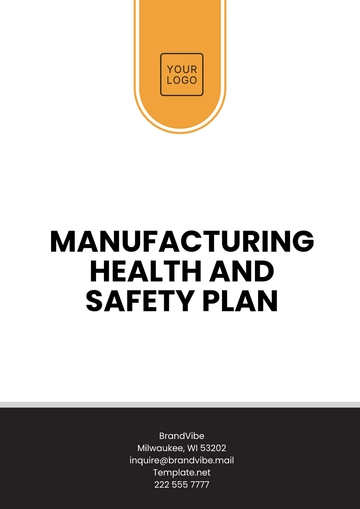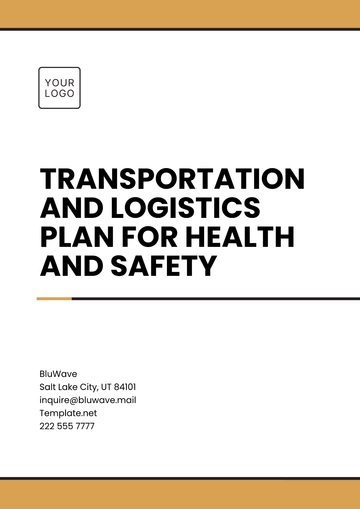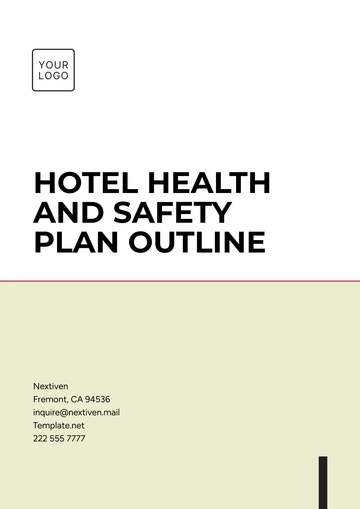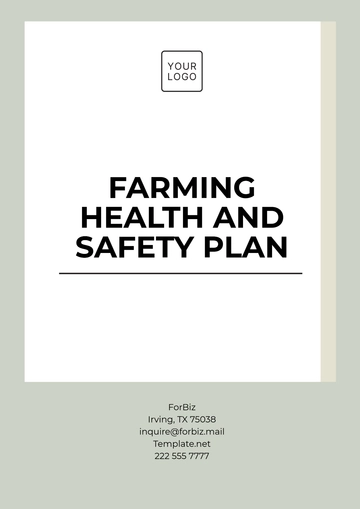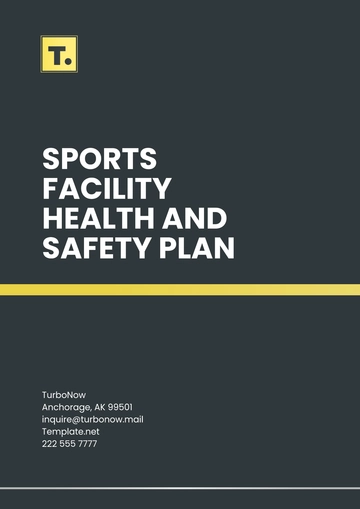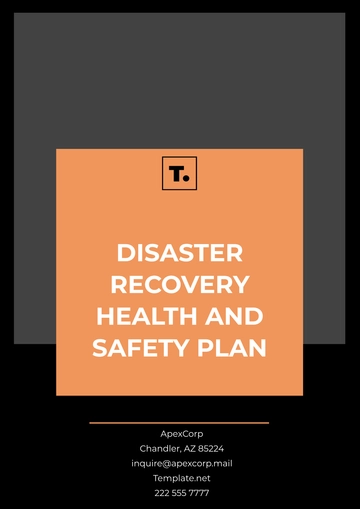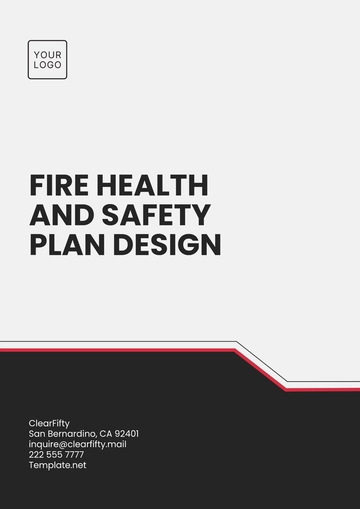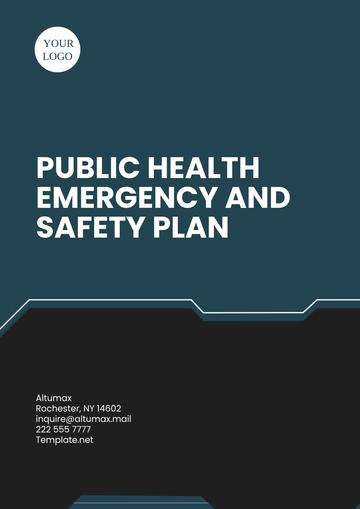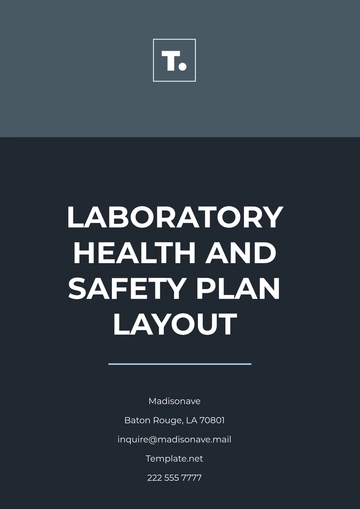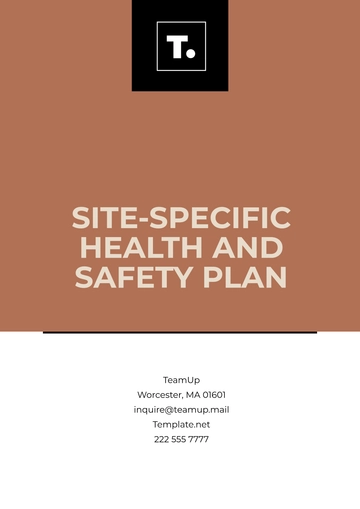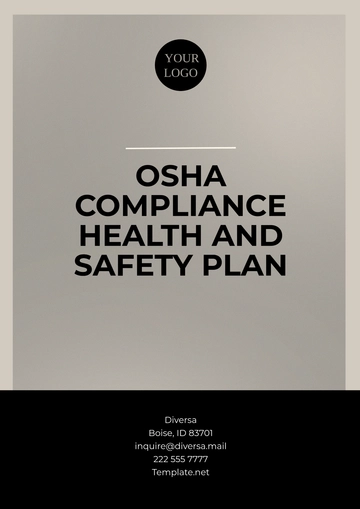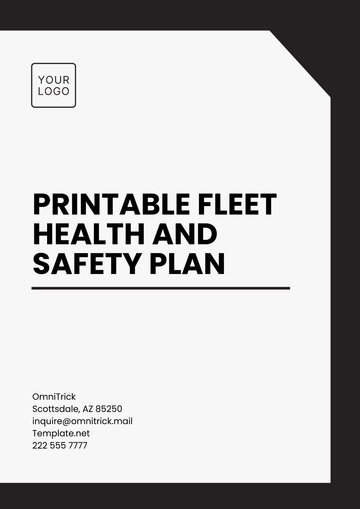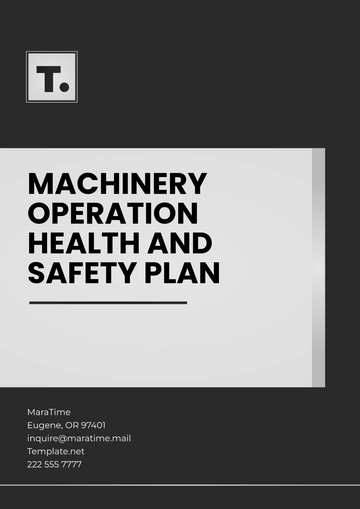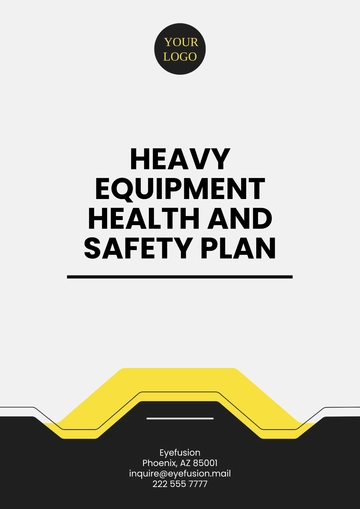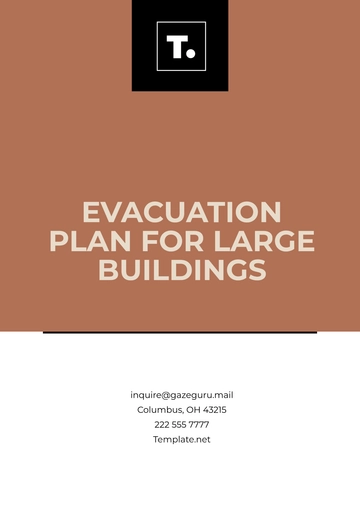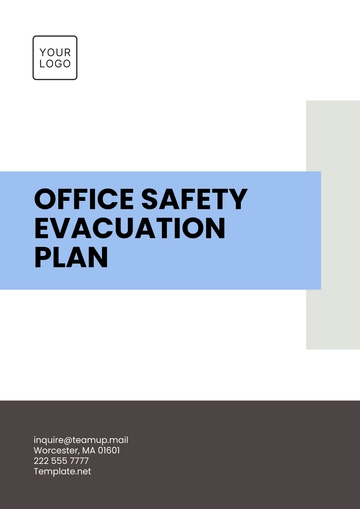Free Fire Safety Awareness Plan
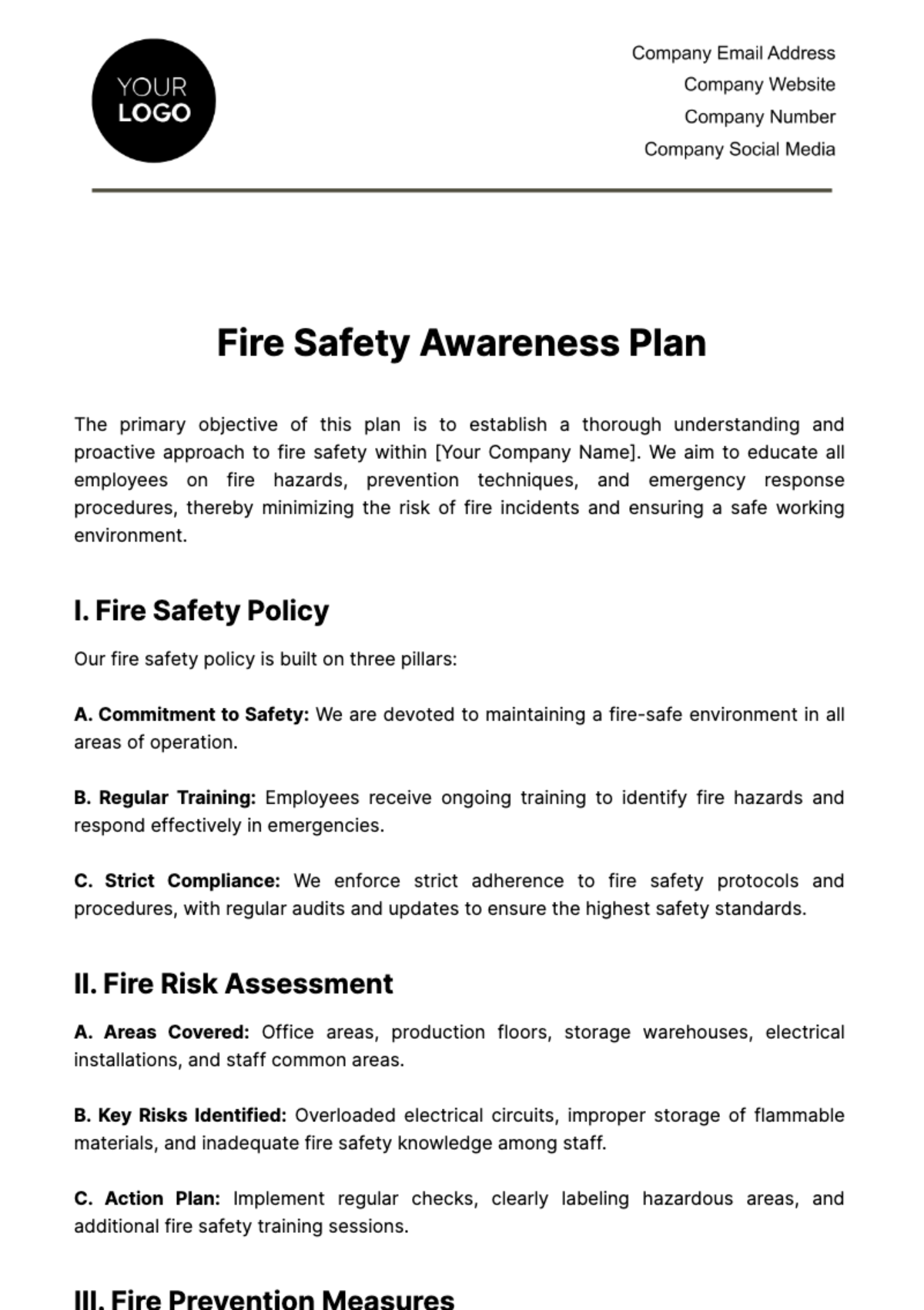
The primary objective of this plan is to establish a thorough understanding and proactive approach to fire safety within [Your Company Name]. We aim to educate all employees on fire hazards, prevention techniques, and emergency response procedures, thereby minimizing the risk of fire incidents and ensuring a safe working environment.
I. Fire Safety Policy
Our fire safety policy is built on three pillars:
A. Commitment to Safety: We are devoted to maintaining a fire-safe environment in all areas of operation.
B. Regular Training: Employees receive ongoing training to identify fire hazards and respond effectively in emergencies.
C. Strict Compliance: We enforce strict adherence to fire safety protocols and procedures, with regular audits and updates to ensure the highest safety standards.
II. Fire Risk Assessment
A. Areas Covered: Office areas, production floors, storage warehouses, electrical installations, and staff common areas.
B. Key Risks Identified: Overloaded electrical circuits, improper storage of flammable materials, and inadequate fire safety knowledge among staff.
C. Action Plan: Implement regular checks, clearly labeling hazardous areas, and additional fire safety training sessions.
III. Fire Prevention Measures
Area | Risk Identified | Preventive Action |
Office Space | Overloaded Sockets | Regular electrical checks |
Warehouse | Flammable Materials | Proper storage protocols |
IV. Emergency Procedures
A. Detailed Evacuation Plan: Maps with clear routes and exits, including secondary routes in case primary ones are inaccessible.
B. Assembly Points: Designated and marked safe areas outside the building, accounting for different scenarios and locations.
V. Training and Drills
A. Fire Safety Training: Comprehensive training covering fire theory, prevention strategies, and use of firefighting equipment.
B. Scheduled Drills: Regularly conducted fire drills to ensure readiness and refine evacuation procedures.
VI. Equipment and Facilities
A. Fire Extinguishers: Locations are clearly marked with regular checks and refills.
B. Fire Alarms and Smoke Detectors: Tested bi-monthly to ensure functionality.
C. Emergency Lighting: Regularly inspected to guarantee operability in power outage situations.
VII. Reporting and Record-Keeping
A. Incident Reporting System: A structured process for reporting and documenting fire incidents and near-misses.
B. Maintenance Records: Detailed logs of all safety equipment inspections, repairs, and replacements.
VIII. Review and Improvement
This plan is reviewed yearly or after significant workplace layout or staff structure changes. It is vital to encourage staff to provide suggestions for improving fire safety measures and incorporating viable ideas.
- 100% Customizable, free editor
- Access 1 Million+ Templates, photo’s & graphics
- Download or share as a template
- Click and replace photos, graphics, text, backgrounds
- Resize, crop, AI write & more
- Access advanced editor
Enhance your safety measures with the Fire Safety Awareness Plan Template from Template.net. This editable and customizable template, equipped with our AI Editor Tool, enables effortless creation of comprehensive fire safety plans. Safeguard your premises and occupants effectively with Template.net's innovative solution.
You may also like
- Finance Plan
- Construction Plan
- Sales Plan
- Development Plan
- Career Plan
- Budget Plan
- HR Plan
- Education Plan
- Transition Plan
- Work Plan
- Training Plan
- Communication Plan
- Operation Plan
- Health And Safety Plan
- Strategy Plan
- Professional Development Plan
- Advertising Plan
- Risk Management Plan
- Restaurant Plan
- School Plan
- Nursing Home Patient Care Plan
- Nursing Care Plan
- Plan Event
- Startup Plan
- Social Media Plan
- Staffing Plan
- Annual Plan
- Content Plan
- Payment Plan
- Implementation Plan
- Hotel Plan
- Workout Plan
- Accounting Plan
- Campaign Plan
- Essay Plan
- 30 60 90 Day Plan
- Research Plan
- Recruitment Plan
- 90 Day Plan
- Quarterly Plan
- Emergency Plan
- 5 Year Plan
- Gym Plan
- Personal Plan
- IT and Software Plan
- Treatment Plan
- Real Estate Plan
- Law Firm Plan
- Healthcare Plan
- Improvement Plan
- Media Plan
- 5 Year Business Plan
- Learning Plan
- Marketing Campaign Plan
- Travel Agency Plan
- Cleaning Services Plan
- Interior Design Plan
- Performance Plan
- PR Plan
- Birth Plan
- Life Plan
- SEO Plan
- Disaster Recovery Plan
- Continuity Plan
- Launch Plan
- Legal Plan
- Behavior Plan
- Performance Improvement Plan
- Salon Plan
- Security Plan
- Security Management Plan
- Employee Development Plan
- Quality Plan
- Service Improvement Plan
- Growth Plan
- Incident Response Plan
- Basketball Plan
- Emergency Action Plan
- Product Launch Plan
- Spa Plan
- Employee Training Plan
- Data Analysis Plan
- Employee Action Plan
- Territory Plan
- Audit Plan
- Classroom Plan
- Activity Plan
- Parenting Plan
- Care Plan
- Project Execution Plan
- Exercise Plan
- Internship Plan
- Software Development Plan
- Continuous Improvement Plan
- Leave Plan
- 90 Day Sales Plan
- Advertising Agency Plan
- Employee Transition Plan
- Smart Action Plan
- Workplace Safety Plan
- Behavior Change Plan
- Contingency Plan
- Continuity of Operations Plan
- Health Plan
- Quality Control Plan
- Self Plan
- Sports Development Plan
- Change Management Plan
- Ecommerce Plan
- Personal Financial Plan
- Process Improvement Plan
- 30-60-90 Day Sales Plan
- Crisis Management Plan
- Engagement Plan
- Execution Plan
- Pandemic Plan
- Quality Assurance Plan
- Service Continuity Plan
- Agile Project Plan
- Fundraising Plan
- Job Transition Plan
- Asset Maintenance Plan
- Maintenance Plan
- Software Test Plan
- Staff Training and Development Plan
- 3 Year Plan
- Brand Activation Plan
- Release Plan
- Resource Plan
- Risk Mitigation Plan
- Teacher Plan
- 30 60 90 Day Plan for New Manager
- Food Safety Plan
- Food Truck Plan
- Hiring Plan
- Quality Management Plan
- Wellness Plan
- Behavior Intervention Plan
- Bonus Plan
- Investment Plan
- Maternity Leave Plan
- Pandemic Response Plan
- Succession Planning
- Coaching Plan
- Configuration Management Plan
- Remote Work Plan
- Self Care Plan
- Teaching Plan
- 100-Day Plan
- HACCP Plan
- Student Plan
- Sustainability Plan
- 30 60 90 Day Plan for Interview
- Access Plan
- Site Specific Safety Plan
